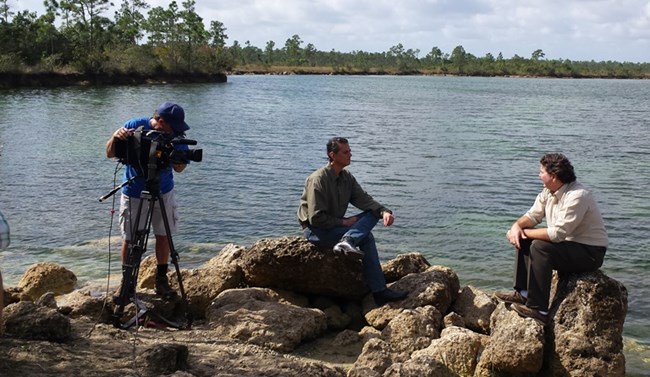
Changes to Filming Permits on Park Land On January 4, 2025, the EXPLORE Act was signed into law (Public Law 118-234) and has been codified at 54 U.S.C. 100905. Section 125 of the Act changed how the National Park Service will manage filming, photography, and audio recording in park areas. Key elements of the new law include:
Filming Permit FAQsNo, provided the filming, still photography, or audio recording activity involves eight or fewer individuals and meets all of the following conditions:
If you believe that your filming, still photography, or audio recording activity may require a permit, please contact the park before your visit (and prior to conducting the activity) by emailing ever_sup_office@nps.gov or by calling (305) 242-7042. All filming, still photography, and audio recording is treated the same under the new law. It does not matter whether it is commercial, non-commercial, for content creation, by a student, or conducted by media or for news gathering.
No. A separate permit and fee payment is not required for filming, photography, or audio recording that is associated with a permitted event, such as a wedding, sporting event, demonstration or other activity. Federal law requires the National Park Service to recover its administrative costs for filming and still photography activities that require a permit. Cost recovery includes an application fee of $200 and any additional charges to cover the costs incurred by the National Park Service in processing your request and monitoring the permitted activities. This amount will vary depending on the park and the size and complexity of the permitted activities. The application fee must be submitted with your application. In addition, Federal law also requires the National Park Service to collect a location fee that provides a fair return to the United States for the use of park lands for filming and for still photography requires a permit. The National Park Service uses the following fee schedules for filming and photography: Filming
Filming and photography permits will contain terms and conditions that are necessary to protect park resources and visitors. They will specify the location and time of the activity and the number of personnel and equipment that may be used. The permits also may require you to obtain liability insurance naming the United States as additionally insured in an amount commensurate with the risk posed to park resources by your proposed activity. You also may be required to post a bond to ensure the payment of all charges and fees and the restoration of the area if necessary.
If you are planning a photography workshop as part of a business, you may need a commercial use authorization.
The Everglades and Dry Tortugas National Parks Special Use Permit Office may be reached at ever_sup_office@nps.gov or by calling (305) 242-7042.
|
Last updated: June 5, 2025
